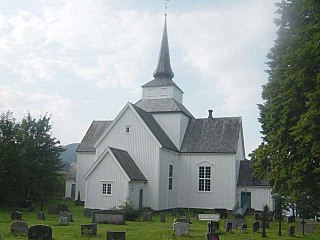 W
WAure Church is a parish church of the Church of Norway in Aure Municipality in Møre og Romsdal county, Norway. It is located in the village of Aure. It is the church for the Aure parish which is part of the Ytre Nordmøre prosti (deanery) in the Diocese of Møre. The white, wooden church was built in a cruciform style in 1924 by the architect Nils Ryjord. The church seats about 800 people.
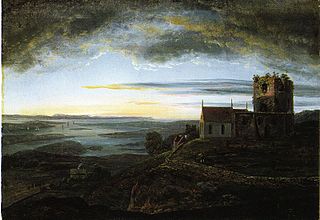 W
WAvaldsnes is a village in Karmøy municipality in Rogaland county, Norway. The village is located on the northeastern part of the island of Karmøy, along the Karmsundet strait, just south of the town of Haugesund. The village was an ancient centre of power on the west coast of Norway and is the site of one of Norway’s more important areas of cultural history. The trading port of Notow and the Avaldsnes Church are two notable historic sites in Avaldsnes.
 W
WBardu Church is a parish church of the Church of Norway in Bardu Municipality in Troms og Finnmark county, Norway. It is located in the village of Setermoen. It is the main church for the Bardu parish which is part of the Senja prosti (deanery) in the Diocese of Nord-Hålogaland. The white, octagonal, wooden church was built in a octagonal style in 1829 using plans drawn up by the architect Ole Olsen Lundberg. The church seats about 220 people.
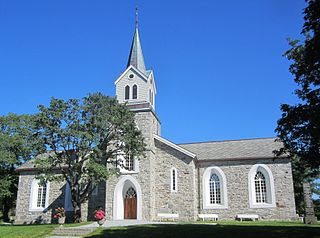 W
WBrønnøy Church is a parish church of the Church of Norway in Brønnøy Municipality in Nordland county, Norway. It is located in the town of Brønnøysund. It is the main church for the Brønnøy parish which is part of the Sør-Helgeland prosti (deanery) in the Diocese of Sør-Hålogaland. The brown, cruciform, stone church was built in a Neo-Gothic style in 1870 by the architect Haakon Mosling. The church seats about 450 people.
 W
WByglandsfjord Station was a railway station in the village of Byglandsfjord in Bygland municipality in Agder county, Norway. It was the terminus station for the old Setesdal Line that traveled up the Setesdal valley from Kristiansand - Grovane - Byglandsfjord until the railway line was closed in 1962. The station sits on the eastern shore of the river Otra, at the south end of the lake Byglandsfjorden.
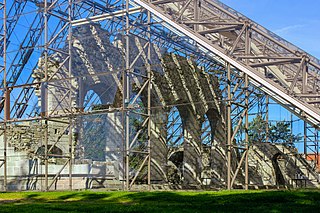 W
WFor the current cathedral in Hamar, see Hamar cathedral.
 W
WDale-Gudbrand's farm is a historical site in Hundorp in the municipality of Sør-Fron in Norway's Gudbrand Valley. It was selected as the millennium site for Oppland county and for the municipality of Sør-Fron in 1999. The farm lies in the middle of a major tumulus area dating back to the Iron Age. In 1755 Gerhard Schøning described five large grave mounds there as one of them was being removed. Now four of them remain; with diameters between 23 and 32 meters, they are undoubtedly the largest in the Gudbrand Valley. In addition to the mounds, there is a square ring of stones and the remains of a round ring of stones at the site. There are also two medium-sized tumuli at the neighboring Hjetlund farm associated with the large tumuli at Hundorp.
 W
WEidsvoll 1814 is the Norwegian Constitution museum with Eidsvoll Manor House, where the Norwegian constitution was drafted and debated in 1814. The building is one of the best-known and most historically important buildings in Norway as the arena for the constitutional process in 1814. The finished constitution was dated and signed on May 17, which also became the Norwegian national day. The museum also consists of the Wergeland House visitor center, with an auditorium, exhibition area, café, and shop, as well as an administrative office. The visitor center is named after the Norwegian poet Henrik Wergeland, who grew up in Eidsvoll in the early 19th century, and who played an important role in the establishment of the museum.
 W
WEidsvollsbygningen is a historic manor house located at Eidsvoll in Viken county, Norway. The building is where the Constitution of Norway was signed on 17 May 1814. The estate is now owned by The State of Norway and is an official national monument, as well as a museum.
 W
WEvenes Church is a parish church of the Church of Norway in Evenes Municipality in Nordland county, Norway. It is located in the village of Evenes, along the northern shore of the Ofotfjorden. It is the church for the Evenes parish which is part of the Ofoten prosti (deanery) in the Diocese of Sør-Hålogaland. The white, wooden church was built in a cruciform style in 1800 using plans drawn up by the architect Johan Bernhard Kreutzer. The church seats about 460 people.
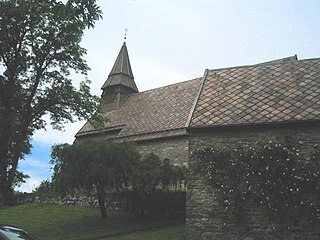 W
WFana Church is a parish church of the Church of Norway in Bergen Municipality in Vestland county, Norway. It is located in Fanahammeren, a village in the borough of Fana in the city of Bergen. It is one of the two churches for the Fana parish which is part of the Fana prosti (deanery) in the Diocese of Bjørgvin. The gray, stone church was built in a long church style in the year 1153 using designs by an unknown architect. The church seats about 450 people. The existing stone building celebrated its 850-year anniversary in 2003, but the church building history is long and complicated. Historians assert that the church has been rebuilt and enlarged several times.
 W
WFlakstad Church is a parish church of the Church of Norway in Flakstad Municipality in Nordland county, Norway. It is located in the village of Flakstad. It is the church for the Flakstad parish which is part of the Lofoten prosti (deanery) in the Diocese of Sør-Hålogaland. The red, wooden church was built in a cruciform style in 1780. The church seats about 300 people. It is the millennium site for Flakstad Municipality.
 W
WFredriksten is a fortress in the city of Halden in Norway.
 W
WGulating was one of the first Norwegian legislative assemblies, or things, and also the name of a present-day law court of western Norway. The practice of periodic regional assemblies predates recorded history, and was firmly established at the time of the unification of Norway into a single kingdom (900–1030). These assemblies or lagþings were not democratic, but did not merely serve elites either. They functioned as judicial and legislative bodies, resolving disputes and establishing laws.
 W
WHålogaland Teater is a regional theatre serving the region of Nord-Norge, the northernmost of Norway. When established in 1971, it was the first regional theatre in Norway, and the first professional theatre in Nord-Norge. Many of its productions are staged in the regional Norwegian dialects. Although based in Tromsø in the Arctic Circle, where it occupies a modern purpose-built building, the theatre also tours the surrounding rural areas. The varied schedule includes a mixture of genres, contemporary and classic drama, and musical and children's theatre.
 W
WHardanger is a traditional district in the western part of Norway, dominated by the Hardangerfjord and its inner branches of the Sørfjorden and the Eid Fjord. It consists of the municipalities of Ullensvang, Eidfjord, Ulvik and Kvam, and is located inside the county of Vestland.
 W
WHøvikodden is a headland in Bærum municipality, Norway, by the Oslofjord near the populated area Høvik, whence its name was taken.
 W
WIbestad Church is a parish church of the Church of Norway in Ibestad Municipality in Troms og Finnmark county, Norway. It is located in the village of Hamnvik in eastern part of the island of Rolla. It is the main church for the Ibestad parish which is part of the Trondenes prosti (deanery) in the Diocese of Nord-Hålogaland. The white, stone, neo-gothic church was built in a long church style in 1881 using plans drawn up by the architect J.A. Johansen from Trondheim. The church seats about 500 people.
 W
WJugendstilsenteret is an Art Nouveau Center located in central Ålesund, in Møre og Romsdal, Norway.
 W
WKvernes is a village in Averøy Municipality in Møre og Romsdal county, Norway. It is located on the east coast of the island of Averøya, along the Kvernesfjorden. County Road 247 runs through the village. There are two churches in Kvernes: Kvernes Stave Church and the Kvernes Church. The stave church is now a museum.
 W
WLindesnes Lighthouse is a coastal lighthouse at the southernmost tip of Norway, about 10 kilometres (6.2 mi) southwest of the village of Høllen in Lindesnes municipality in Agder county. The present lighthouse was built in 1915, although the station was first built in 1656 to mark the entrance to the Skaggerak and the Baltic Sea from the North Sea. The current 16.1-metre (53 ft) tall lighthouse is cast iron with a granite foundation. The lighthouse is painted white, with a red top. The light sits at an elevation of 50.1 metres (164 ft) and it emits a fixed and flashing white light that is always on and it rotates between a low intensity and high intensity light every 20 seconds. The light comes from a first order Fresnel lens that can be seen for up to 17.7 nautical miles.
 W
WLurøy Church is a parish church of the Church of Norway in Lurøy Municipality in Nordland county, Norway. It is located on the south side of the village of Lurøy on the island of Lurøya. It is the main church for the Lurøy parish which is part of the Nord-Helgeland prosti (deanery) in the Diocese of Sør-Hålogaland. The white, wooden church was built in a cruciform style in 1812. The church seats about 375 people.
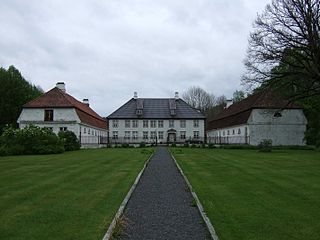 W
WNæs Ironworks in Holt, was an iron works which started operation in 1665 under the name “Baaseland Værk”. The blast furnace and foundry were located at the Båsland farm, while the associated forge was located a kilometer further east, by the Storelva river at Næs. The blast furnace was new, and not an extension of the Barbu jernverk at Arendal which ceased operations in the 1650s. “Baaseland Værk” was given the name Naes blast furnace operation when the buildings were concentrated by Storelva in 1738. About 1840 the firm was renamed Jacob Aall & Søn. It ceased operation in 1959.
 W
WThe Norveg Coastal Culture and Industry Center is part of the Nord-Trøndelag Coastal Museum on the island of Vikna, Norway. Norveg contains historical exhibits, a restaurant, a gallery, and a cultural center. The head of the Nord-Trøndelag Coastal Museum is Charles Utvik.
 W
WOld Karasjok Church is a former parish church of the Church of Norway in Karasjok Municipality in Troms og Finnmark county, Norway. It is located in the village of Karasjok. It used to be the main church for the Karasjok parish which is part of the Indre Finnmark prosti (deanery) in the Diocese of Nord-Hålogaland. The Old Karasjok Church is the oldest Lutheran church in Finnmark county, and the only building in the municipality to survive World War II undamaged. The church is no longer regularly used, but it is utilized occasionally for special situations such as weddings.
 W
WThe Petter Dass Museum in Alstahaug, Norway is a museum dedicated to the priest and poet Petter Dass.
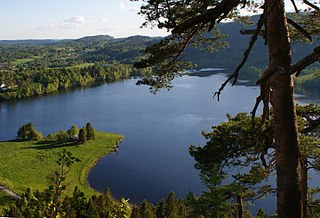 W
WSemsvannet is a lake in Asker municipality in Viken county, southwest of Oslo, in Norway. The lake is situated close to, for the Norwegians, famous places such as the ridge Skaugumsåsen, the old cultural house Tangen and Skaugum the official residence of the heir to the throne of Norway, i.e. the crown prince or princess of Norway. The status of Semsvannet as a nature reserve was upgraded when the area was protected as a conservation area October 2, 1992. The lake and its vicinity was elected a millennium site in the year 2000.
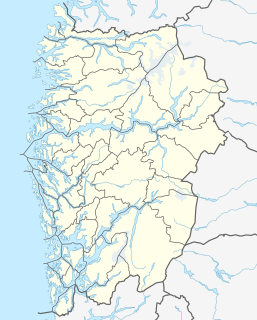 W
WStorebø is the administrative centre and largest village in Austevoll municipality in Vestland county, Norway. The village is located on the northern part of the island of Huftarøy, just south of the village of Birkeland and northwest of the village of Haukanes. The 1.67-square-kilometre (410-acre) village has a population (2019) of 1,588 and a population density of 951 inhabitants per square kilometre (2,460/sq mi).
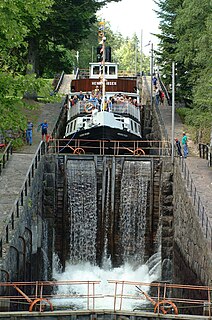 W
WThe Telemark Canal connects the towns Skien and Dalen in southern Norway by linking several long lakes in the Skien watershed through a series of 18 locks.
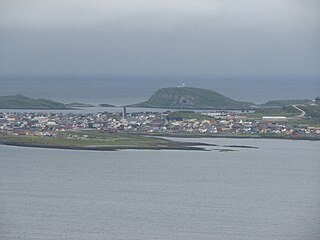 W
WVardø (help·info) is a town and the administrative centre of Vardø Municipality in Troms og Finnmark county, Norway. The town is located on the island of Vardøya in the Barents Sea, just off the coast of the large Varanger Peninsula. The 1.19-square-kilometre (290-acre) town has a population (2017) of 1,875 which gives the town a population density of 1,576 inhabitants per square kilometre (4,080/sq mi).